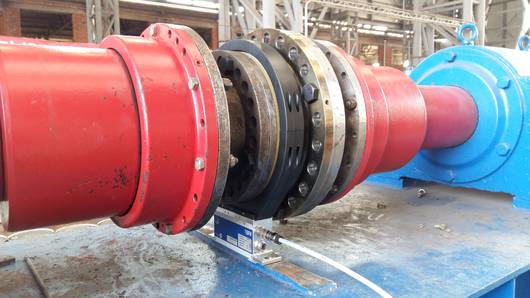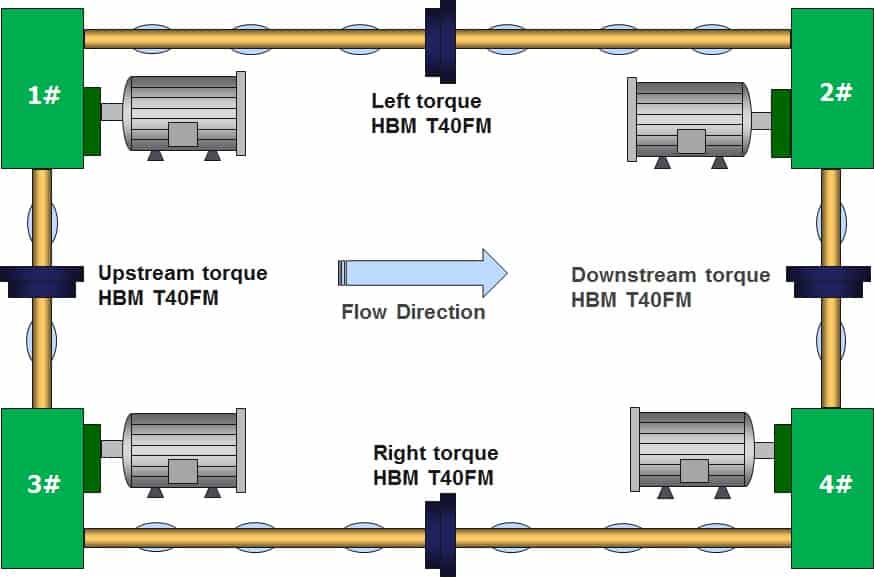In many power machinery and transport machinery such as motors, fans, pumps, gearboxes, automotive drive shafts, marine propeller shafts and oil rigs, the torque in drive shafts is an extremely important parameter for the entire power system.
A boat lift, ship lift, or lift lock is a machine for transporting boats between water at two different elevations, and is an alternative to the canal lock and the canal inclined plane. A vertical ship lift is large electromechanical equipment for a cargo ship passing dam. It's composed of four parts which includes an upper lock head, lower lock head, ship reception chamber and the main lift system. The main lift system consists of lifting equipment, corresponding control equipment and testing equipment distributed in four lifting points. Each lifting device at different lifting point includes DC motor, reduction gearbox, hoist drum wrapped lifting rope and hydraulic brakes.
Torque measurement in a ship lift
In order to operate a ship reception chamber synchronously (including electrical synchronization), smoothly and safely, the output shafts of reduction gearboxes at four lifting points should be connected to a closed rectangular shaft system which constitutes mechanical rigid synchronous system.
To ensure power equilibrium, make sure torque outputs of drive motors for the mechanical synchronous drive system remain the same. It is important that the synchronous transmission shaft does not suffer excessive torque and rupture.
When a winch motor fails, the other three winch motors will supplement power to the failed lifting point via synchronizing shaft system immediately in order to ensure normal operation of the main hoist. Synchronizing torque shafts is monitored and reflects the power allocation.
In order for the ship to avoid sinking or floating when the brake releases, the drive system will generate a certain torque output in advance according to unbalanced force and its direction between the ship reception chamber and the balancing weight.
Use in the Silin ship dam lift
The HBM torque transducer T40FM was used in the Silin dam ship lift (Capacity: 500tons, Dimensions of navigable ship: 55×10.8×1.6metres, vertical lift: 76.6metres) in China. Four HBM T40FM torque transducers were installed into rectangular ring synchronized shaft systems to monitor the working torque of each synchronized shaft. The torque signals are used for monitoring applied torque, controlling equilibrium torque and triggering an alarm if the limit torque is exceeded.
Benefits from HBM’s T40FM
- Reliable and stable: HBM torque sensors have worked well in Shuikou dam ship lifts for more than 10 years.
High precision: accuracy class 0.1 with linearity 0.1%, reproducibility 0.05%, Tcspan 0.1%/10K, TC0 0.05%/10K ensures the best torque measurement result
High frequency response helps fast control
Robust: excellent ability for overload and parasitic load
Easy installation
Benefits from HBM’s service team
Free maintenance
Quick response
Professional consultation,
On-site support


